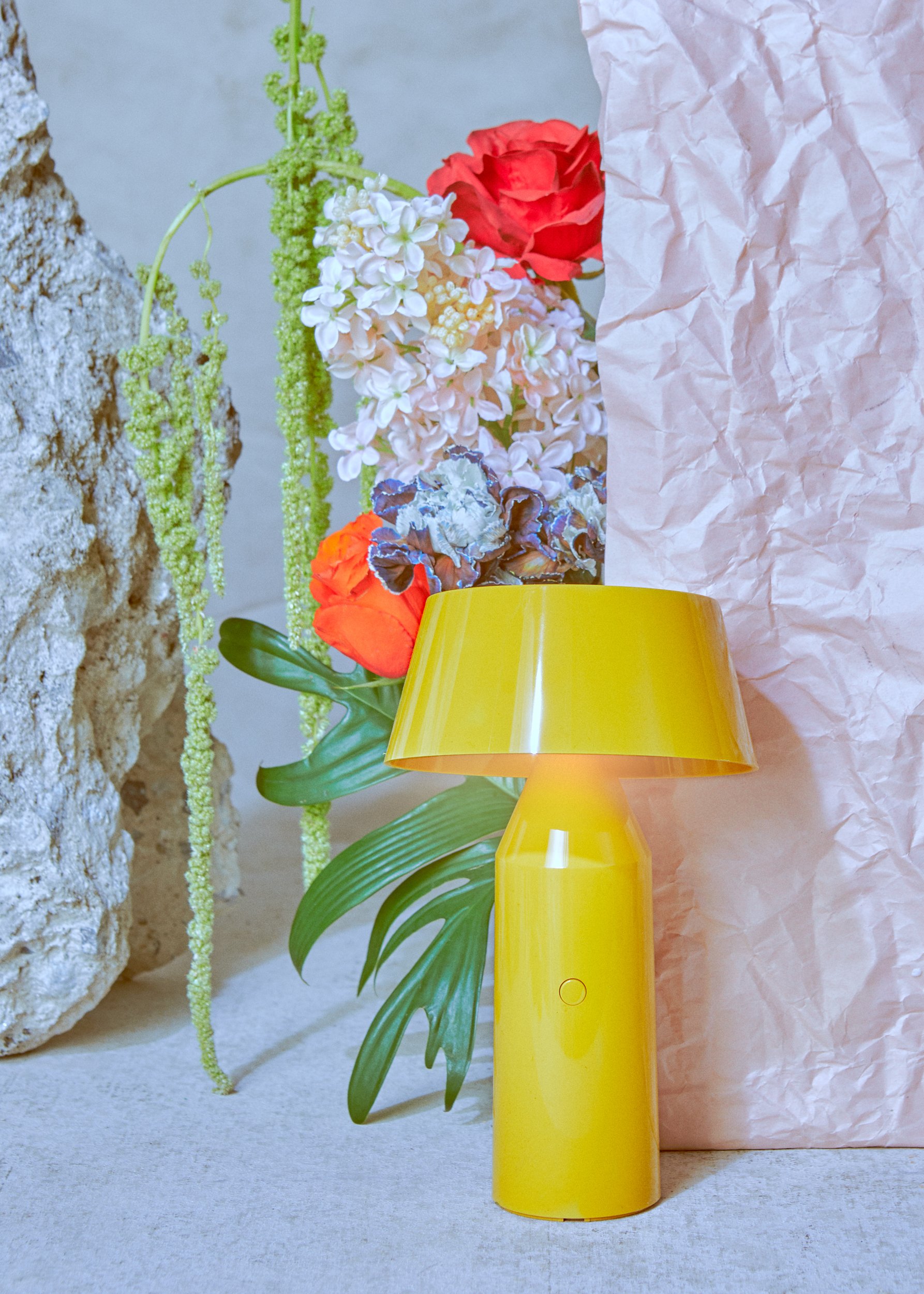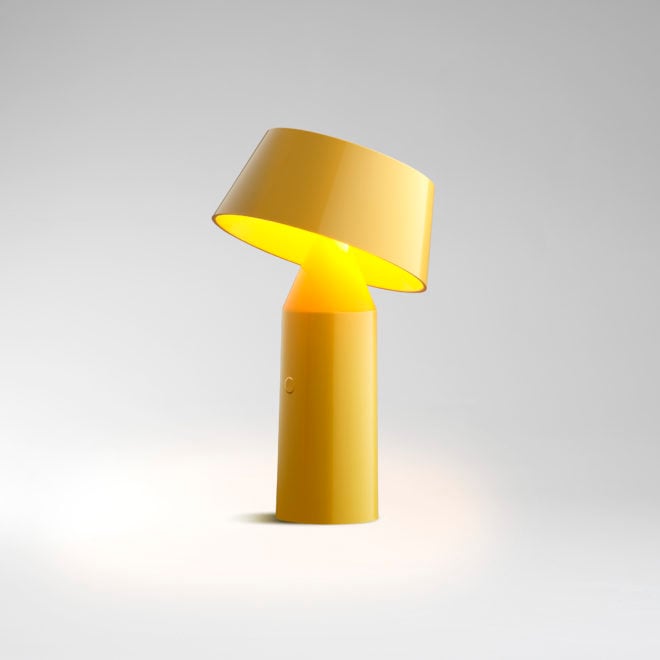Marset Featuring
Flowers, rocks, light & beauty
A project by Robin Stein & Sonia Rentsch with the Bicoca lamp
Interview by Emmy Koski
Always close to nature, set designer Sonia Rentsch and photographer Robin Stein set off to develop a new vision for Marset’s colourful Bicoca. Bicoca is designed to accompany you wherever you go, adding comfort and cheer to your daily life. A portable lamp designed by Christophe Mathieu, it projects an intimate light that brings immediate warmth to any personal space. Driven by the optimism of brightening life that the Bicoca embodies, Sonia and Robin create a contemporary nature morte, combining nature with manufactured materials in a joyful, textural celebration of this little light.
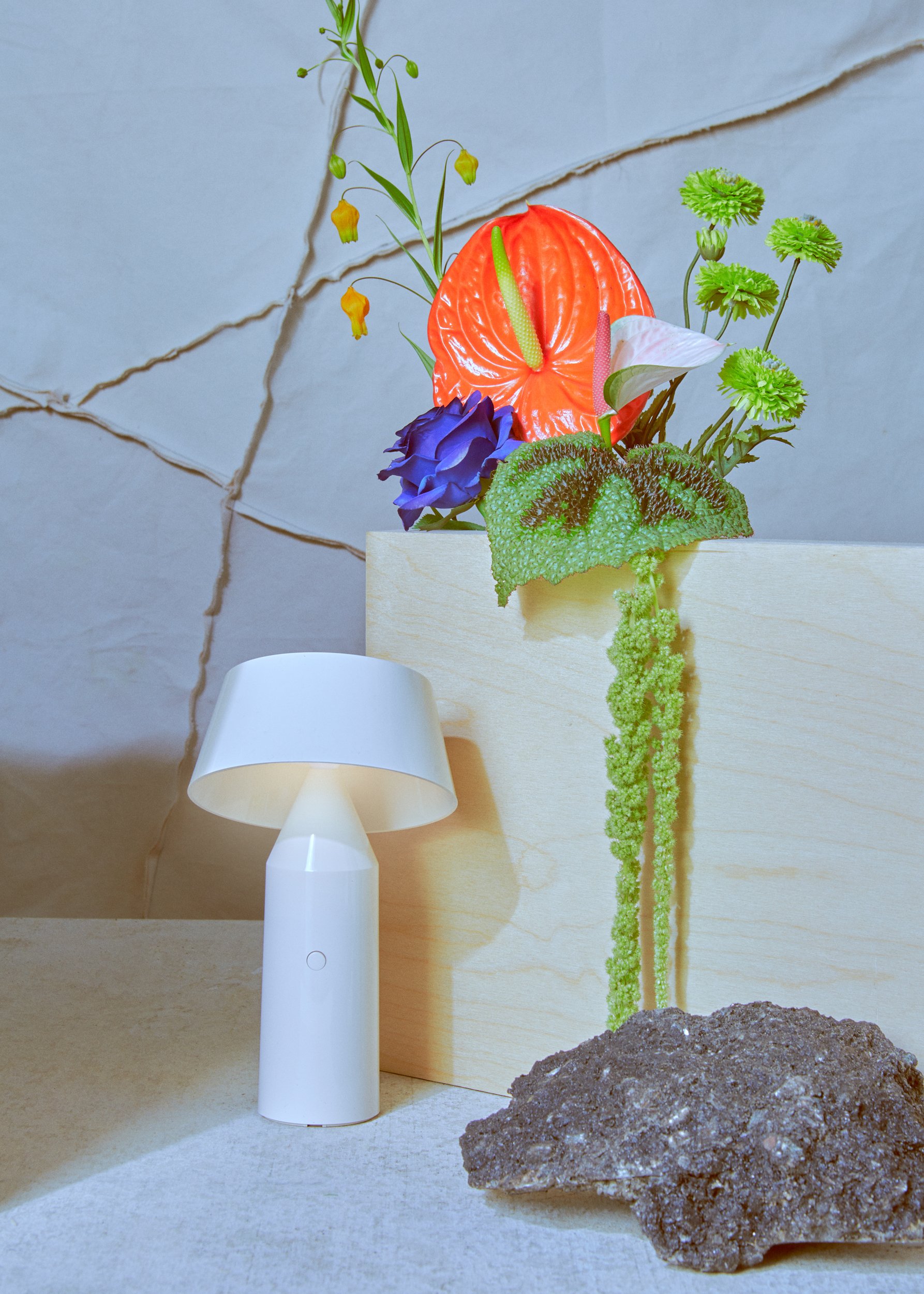
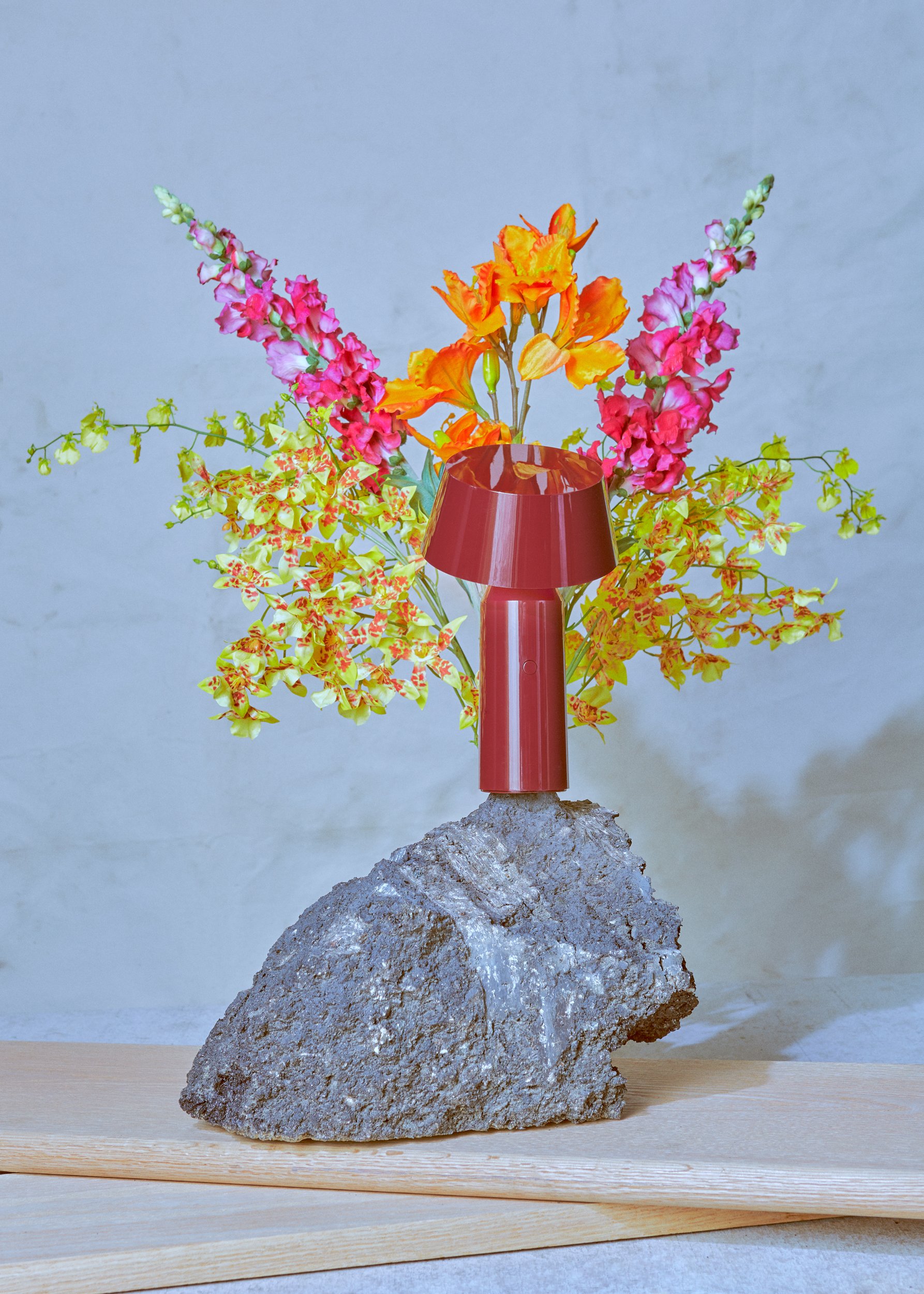
“Robin and I are engaged in a real-world experience with the subject matter, picking it up, moving it around, looking at it in real time.”
“All things can create inspiration unexpectedly. I find inspiration from browsing and digging – I go to a lot of salvaged building supply stores looking for props, surfaces and materials for shoots.”
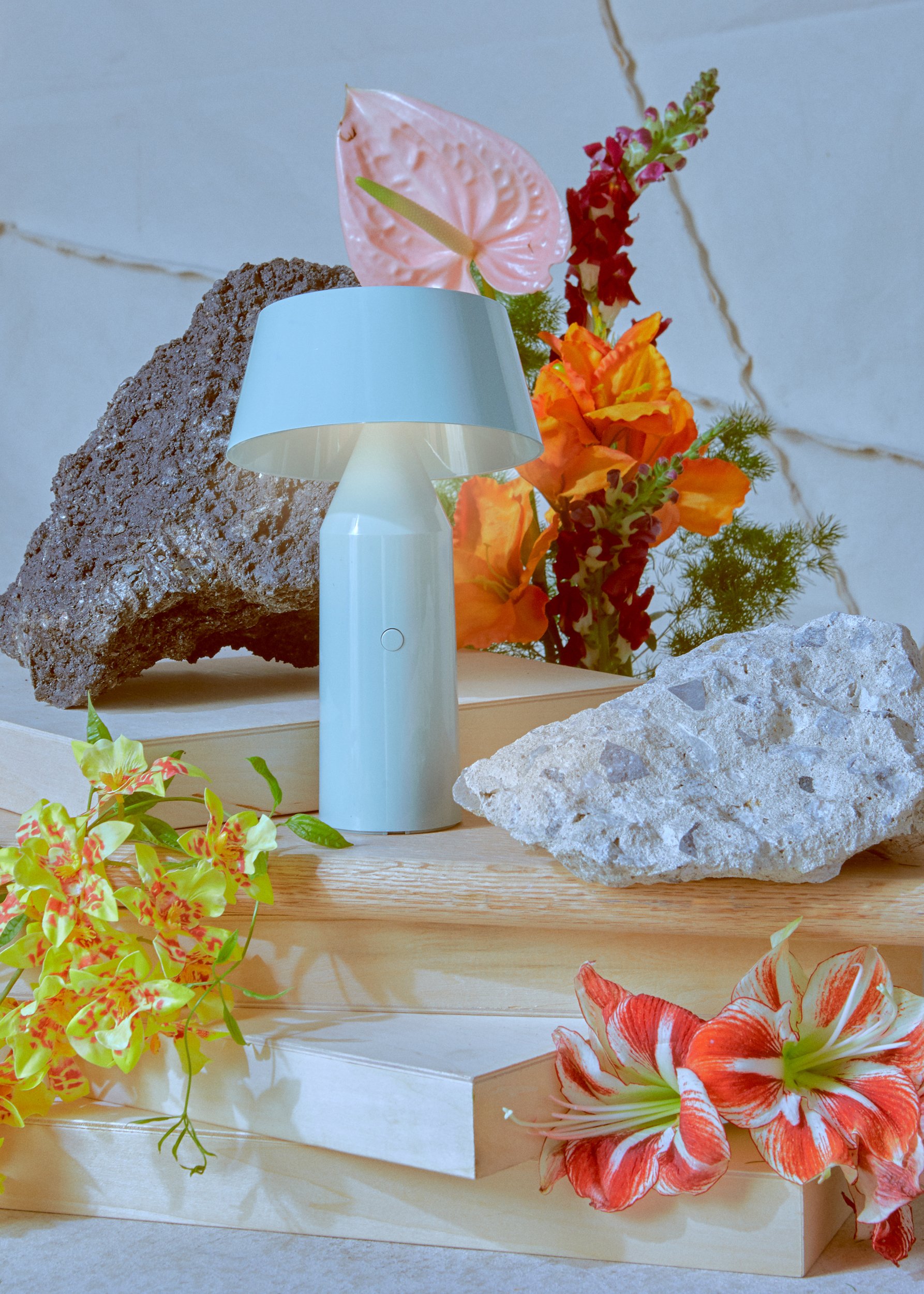
“A dash of adrenalin, a ton of flowers, some real, some not, Robin’s rocks and two artists.”
